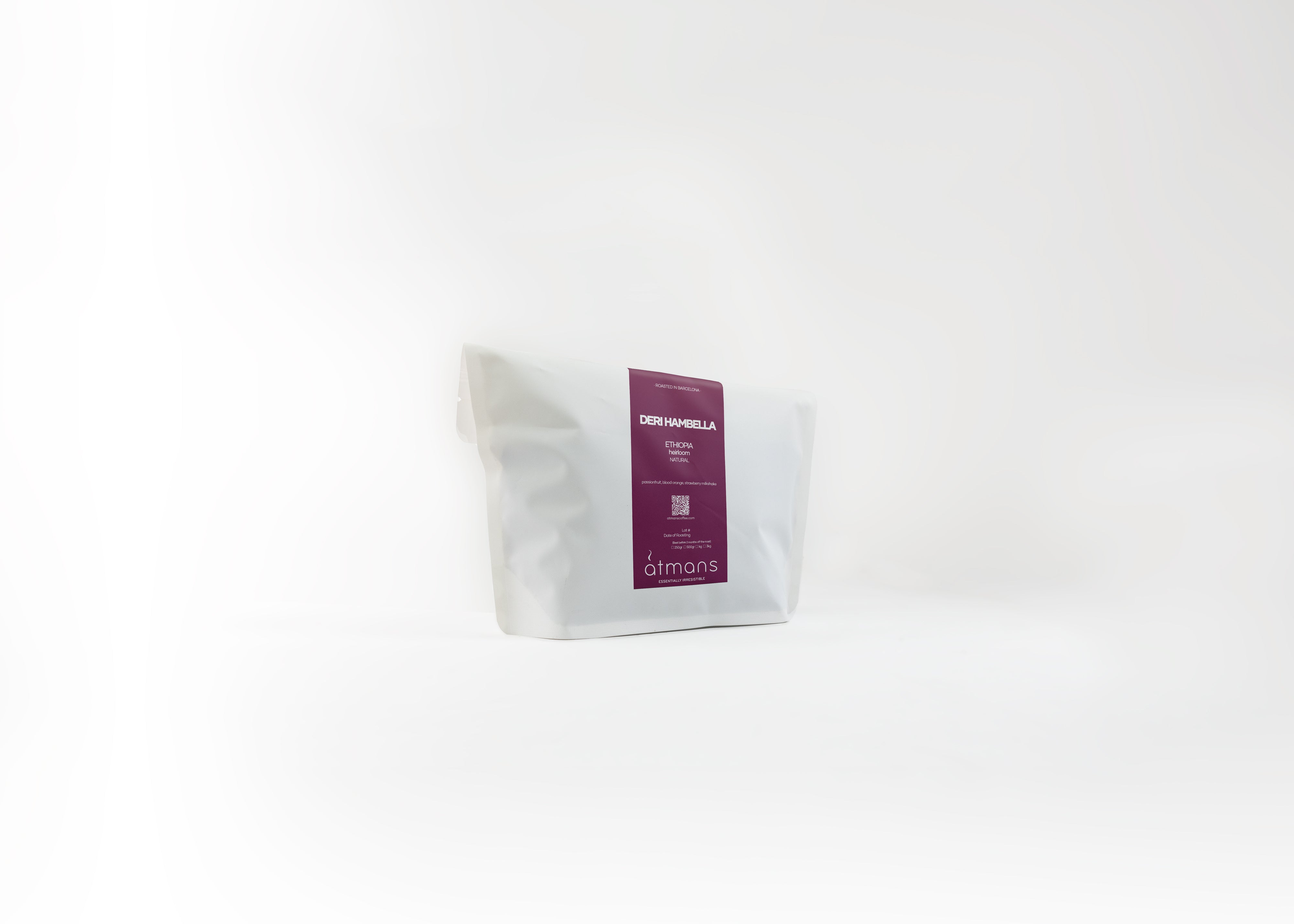
Deri Hambella, Ethiopia
Tasting Notes
Description
This microlot Gr.1 comes from Guji Hambella Station in Deri Kidame, a village in Hambella District, Guji Zone. The smallholder farmers who supply Guji Hambella typically do not cultivate more than 2ha of land around their home at altitudes ranging up to 2125m above sea level. This natural process is carefully sorted to select only the ripest and highest quality cherries for processing. The cherries are then sun-dried on African raised beds for 21 days. Guji is one of the zones in the Oromia Region of Ethiopia, named after a tribe of the Oromo people. Guji is bordered to the south by Borena, to the west by the Southern Nations, Nationalities and Peoples' Region, to the north by the Ganale Dorya River which separates it from Bale, and to the east by the Somali Region. The highest point in this zone is Mount Dara Tiniro. The main towns and villages in this zone include its administrative centre, Negele. Guji Zone was created in September 2002, when the highland woredas of Borena Zone were divided to create it. Over a number of years, this region has developed a distinguished reputation for quality coffees, and produces some of the most sought-after microlots in the world. The combination of high altitude (up to 2200m in some areas), fertile soil, consistent and abundant rainfall and a wealth of local knowledge are all factors that contribute to the high status of these coffees. The indigenous “heritage” varieties such as Kumie, Diga and Wilsho, which grow wild in Ethiopia, are responsible for the unique flavour notes that result in an unusual yet refined cup. When processed naturally by sun-drying, they present as juicy, candied flavours of stone fruits, floral notes and chocolate with a creamy body. Coffee is ancient in Ethiopia, but its cultivation is not. By the late 9th century coffee was actively cultivated in Ethiopia as a food, but probably not as a drink. It was the Arab world that developed the brewing of the drink. Even when coffee became an export for Ethiopia in the late 19th century, Ethiopian coffee was the result of picking rather than agricultural practices. A hundred years ago, plantations, mainly in Harar, were still the exception, while “Kaffa” coffee from the southwest was still harvested wild. In 1935, William Ukers wrote: “Wild coffee is also known as Kaffa coffee, coming from one of the districts where it grows most abundantly in the wild. The trees grow in such profusion that the possible supply, with a minimum of picking labor, is practically unlimited. It is said that in southwestern Abyssinia there are immense forests which have never been invaded except on the outskirts.”
Origin
Purchase
Similar Beans
Based on tasting notes and processing method


353 Colombia | Coffee Beans
Uncle Ben's Coffee

360 Colombia | Coffee Beans
Uncle Ben's Coffee

364 Colombia | Coffee Beans
Uncle Ben's Coffee